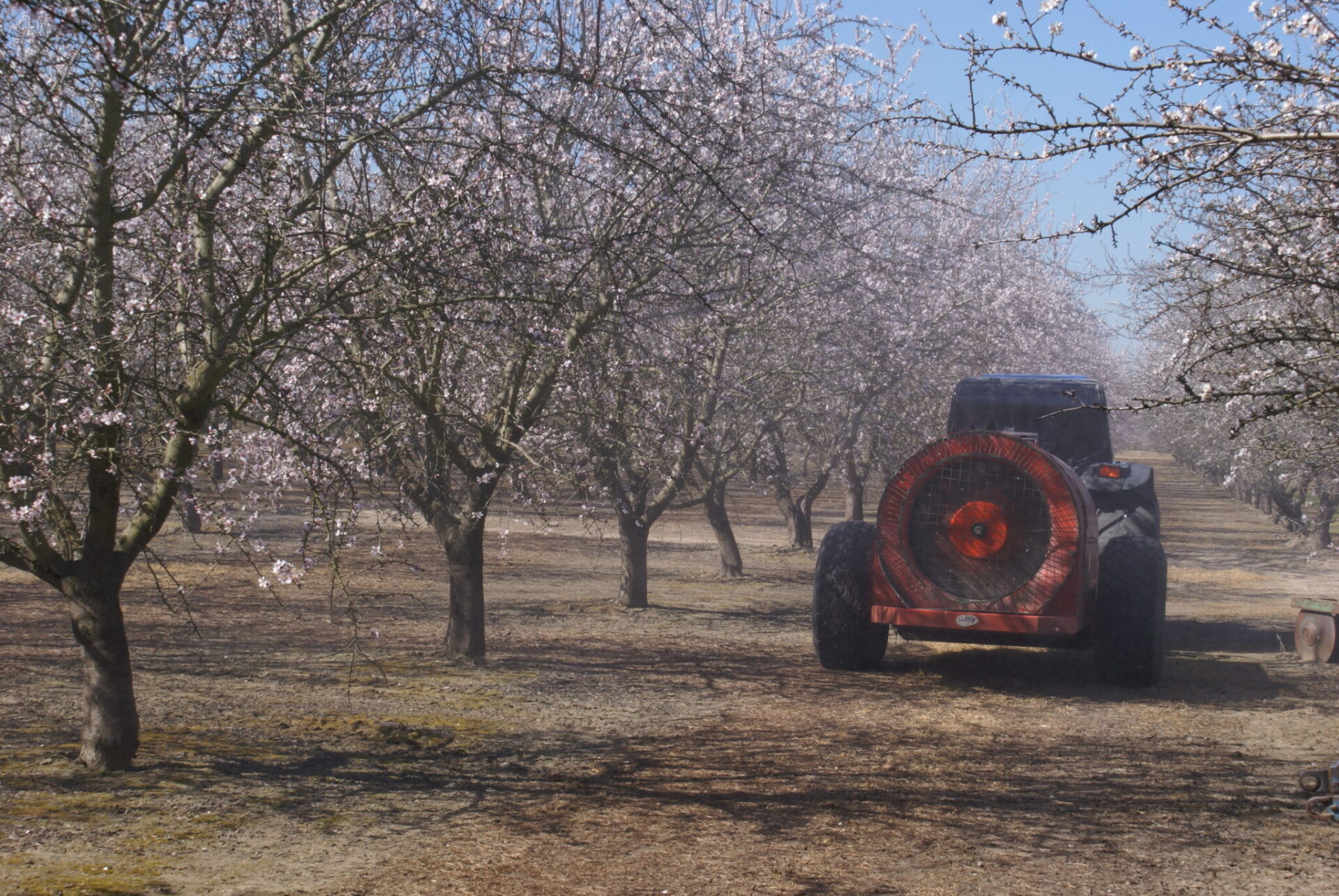
Choosing the right product(s), communication and planning are key disease management practices for almond bloom and must be considered in tandem with bee safety.
Franz Niederholzer, UCCE Orchard Systems Advisor in Colusa and Sutter/Yuba counties, made it clear that there is no more critical time in almond production than bloom and that PCAs and beekeepers play an important role in the process.
“Growers need support from PCAs and beekeepers for the best outcome,” Niederholzer said in an Almond Board of California Training Tuesday virtual session. “Planning and communication are needed to deliver the best crop potential (nut set) possible. Have a plan and a trained workforce to deliver the best crop set coming out of bloom.”
Growers need to plan to control multiple diseases in the orchard during bloom. Anthracnose, brown rot and green fruit rot are primary bloom diseases, and Niederholzer said infection risk changes with bloom stage. Brown rot and alternaria infection are the main concerns early in bloom (pink bud timing) while controlling those diseases plus green fruit rot, shothole, leaf blight and bacterial spot are concerns at full bloom.
Weather conditions influence material selection and spray timings for disease management.
“Under clear skies, spray one time at 30% to 40% bloom using FRAC 3, 9 and/or 11 fungicides,” Niederholzer said. “During a wet, rainy bloom, two sprays are recommended (pink bud and full bloom).”
Best disease management practices dictate that fungicides need to be sprayed in accordance with bee activity as to not disrupt pollination or harm hives.
“Fungicides and bees can be active in orchard on the same day but not at the same time,” Niederholzer said. “The bees should have the “morning shift” to collect pollen, and fungicides should be applied later in the day and into the night if necessary to finish the job. The worst timing for spraying is when bees are collecting pollen, usually in the morning.”
The preferred time for starting spraying at bloom, Niederholzer said, is after pollen is gone from the orchard for the day, usually by early afternoon with good bee activity. Never spray directly onto hives and always spray fungicides ahead of rain or dew for best results.
“The only reason to spray at bloom is to protect the flowers,” Niederholzer said. “There are other proven effective spray timings for insecticide and/or foliar nutrient sprays. You don’t want pesticides on the pollen since the bees will take it back and expose the hive to them.”
Bees collect almond pollen as an important source of protein for the hive, and they can clean the morning pollen off the anthers within five hours, according to Niederholzer. If fungicides need to be sprayed, proper spray timing – after pollen has been collected – should be followed.











